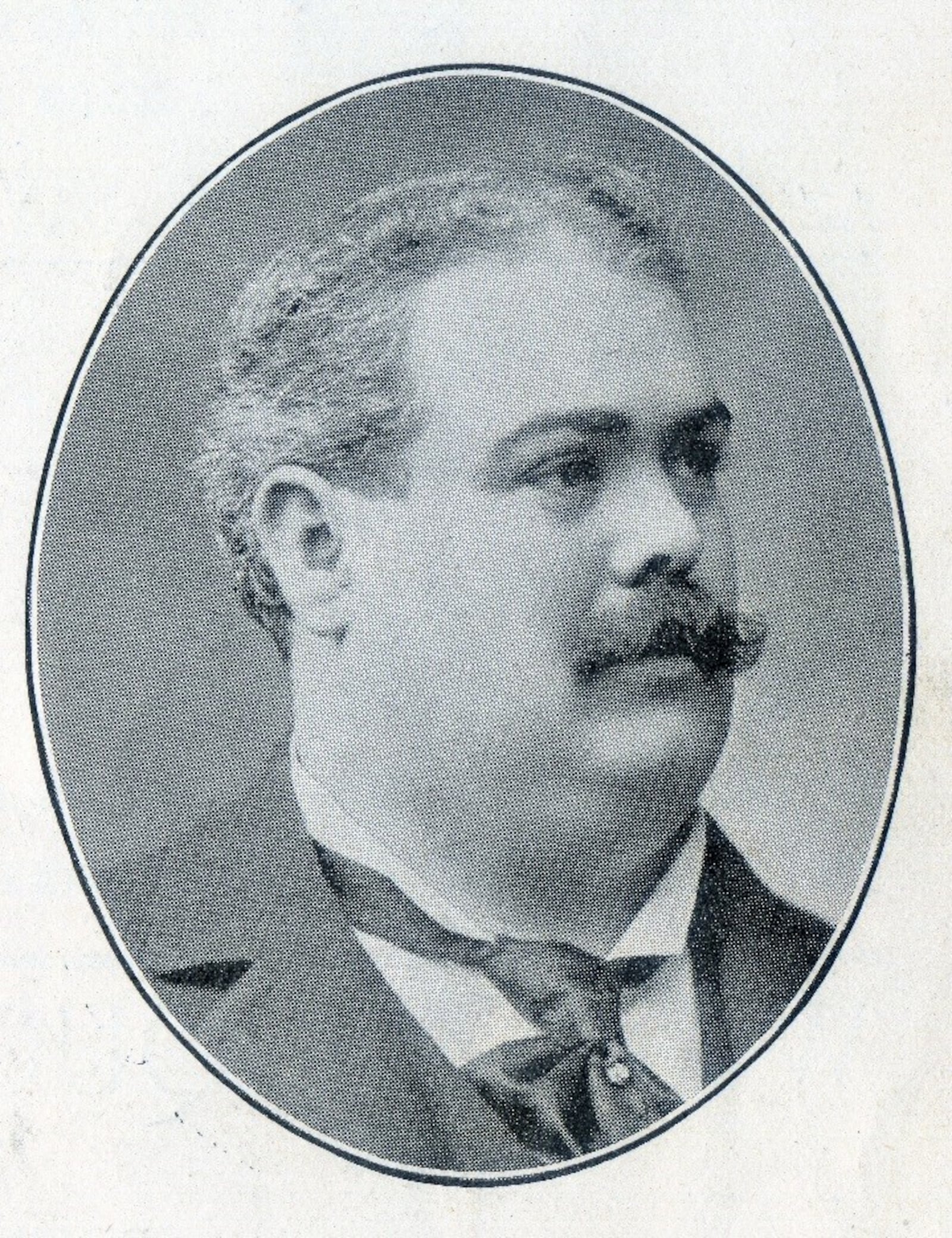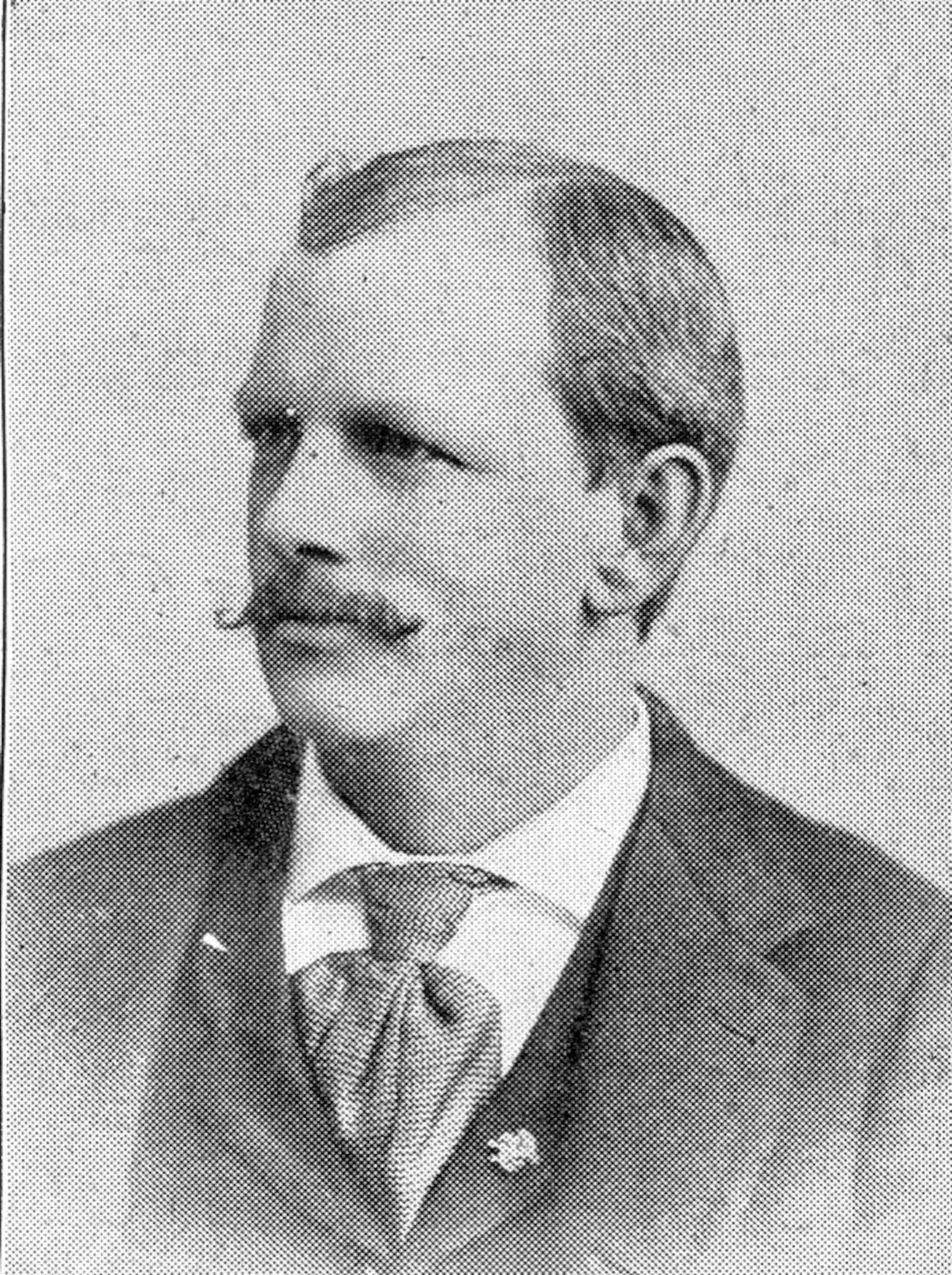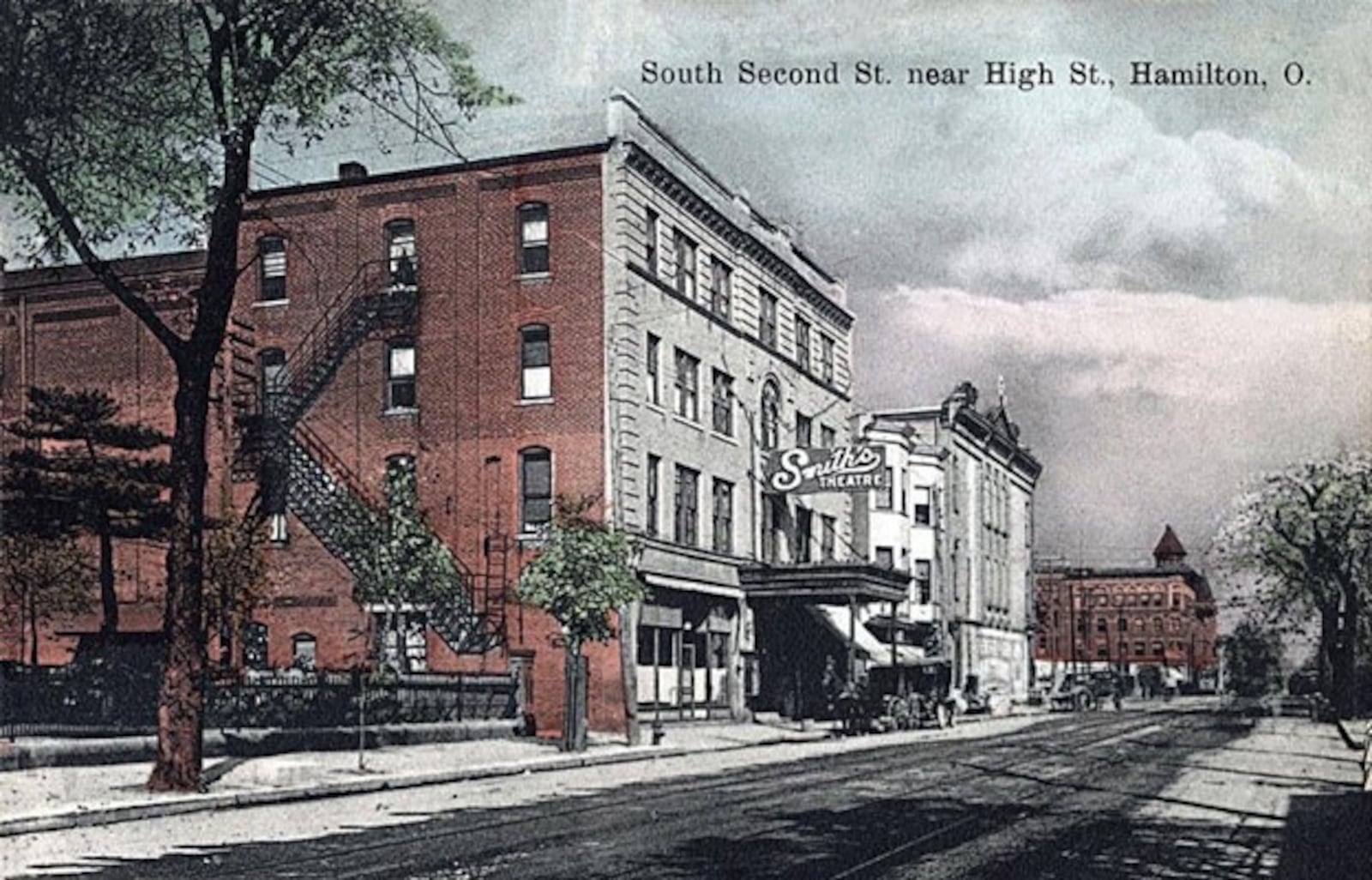By 1898, Tom A. Smith, manager of the Globe Opera House, began an effort to get a new legitimate theatre for Hamilton. Smith also managed the new Lindenwald Amusement Park and its 2,000-seat open-air theatre which opened in 1898. Smith met with local citizens to discuss his idea and a committee was formed on April 18, 1901 to work toward making a new theatre a reality. Members of the committee included George P. Sohngen, as head, William M. Dingfelder, Samuel D. Fitton, Homer Gard, Charles E. Heiser, Calvin E. Hemp, O. V. Parrish, James W. See, and John C. Slayback.
On May 12, 1901, Smith began corresponding with George H. Johnson, a major theatre builder and promoter in St. Louis, Missouri. Johnson had experience building opera houses in small towns throughout the Midwest and South. During his lifetime, he built 79 theatres in Arkansas, Illinois, Indiana, Iowa, Kansas, Mississippi, Missouri, Ohio, and Oklahoma.
Johnson, proposed building a modern, up-to-date theatre to cost from $45,000 to $48,000 (equivalent to about $1,650,000 to $1,760,000 in 2024) with a seating capacity of at least 1,250. In exchange, the people of Hamilton had to purchase all seats for the first performance in the theatre at a cost of $10 each. The $12,500 would be paid to Johnson who also expected to sell the theatre to anyone making an acceptable offer. At first, the theatre was named “The Hamilton” but the citizen’s committee decided to change its name to “The Jefferson” in honor of Joseph Jefferson, the actor widely considered to be America’s greatest actor and comedian.
The Jefferson was a modern, state-of-the-art theatre. Its entrance featured an attractive 20 foot by 16 foot lobby with mosaic tile flooring and an adjacent carpeted foyer. The first floor included a lady’s parlor and toilet, a gentlemen’s smoking room and toilet, manager’s private office and a ticket office. The stage was 70 feet wide by 40 feet deep with a 32 foot high proscenium opening. There was a fly gallery 54 feet above the stage floor and the stage area was lit by 800 electric lights. The auditorium had a seating capacity of 1,593 with 500 seats on the first floor, 493 seats in the first balcony and 600 seats in the second balcony. All public areas were finished in blue, red, yellow and gold with red velvet draperies and carpeting.
Even though the architect of record was Hamilton’s Frederick Mueller, the original plans for the theatre presented by Johnson were designed by John Eberson, an architect working for Johnson’s Realty and Construction Company in St. Louis. After Johnson’s death in 1908, Eberson started his own architectural firm in Hamilton and designed the Jewel Theatre, a nickelodeon located on the corner of 2nd Street and Court Street. Eberson would go on to design more than 100 movie theatres in dozens of states and nearly 400 other structures during his life.
The Jefferson Theatre opened on March 31, 1903 with a performance of “The Emerald Isle,” a two-act comic opera with music by Arthur Sullivan and Edward German, and a libretto by Basil Hood. The opera had a 205 performance run in London, from April 27 through Nov. 9, 1901, at the Savoy Theatre. The show was then produced in New York City by Sam Shubert at the Herald Square Theatre for 50 performances, running from Sept. 1 through Oct. 18, 1902. That Broadway production featured Jefferson DeAngelis and his opera company.
DeAngelis took his entire New York production, including all of its scenery and cast of 70, on the road. The company performed the opera in states throughout the East, Midwest, South and Canada in 1902 and 1903. During the month before the company’s appearance at the Jefferson, DeAngelis and his troupe gave performances in Chicago (March 1-8); Freeport, Illinois (9th); Davenport, Iowa (12th); Rock Island, Illinois (13th); Cedar Rapids, Iowa (14th); South Bend, Indiana (19th); Marion, Indiana (20th); Muncie, Indiana (23rd); Lima, Ohio (24th); Sandusky, Ohio (26th) and Marion, Indiana again (28th).
An audience of almost 1,800 attended the Jefferson’s opening night performance, each paying $10 per seat (equivalent to about $358 in 2024). Nearly all patrons wore full evening dress, formal wear, costly gowns or their finest clothes for the event. It was truly the gala social event of the year. A second performance of the opera was given April 1 when the ticket prices ranged from $0.25 for gallery seats to $1.50 for first floor seats.
The Hamilton Evening Democrat (April 1, 1903), reported that nearly all theatre-goers expressed great admiration for the beauty, comfort and high quality of the materials used in the theatre’s construction. The paper reported that “the superb stage setting, scenery, light effects, size of the stage, all were such that the audience clapped their hands in pleasure. The Hamilton Evening Sun (April 1, 1903) said the production of “The Emerald Isle” was “a musical treat” and that it was “a high class stage attraction and well chosen for the inaugural night.” L. C. Overpeck, a Hamilton photographer, took a souvenir photo of the audience to commemorate the occasion.
On May 9, about six weeks after the Jefferson opened, Tom A. Smith purchased the theatre for $35,000 (equivalent to about $1,250,000 today) and renamed it “Smith’s Theatre.” During the first year of his ownership of the theatre, Smith booked productions provided by several traveling stock companies, small road companies that specialized in “one-night stand” cities, lecturers, local talent shows, club presentations and graduation ceremonies of Hamilton High School’s Class of 1903. A surprising variety of minstrel shows, dramas, vaudeville shows, comedies, plays, musicals, operas, melodramas, and star-centered productions appeared at the theatre.
A little more than a year after the Jefferson had opened, Joseph Jefferson played the theatre named after him on April 23, 1904. Jefferson, at the age of 76, acted two of his most famous roles: Rip Van Winkle during a matinee and Bob Acres in Richard Brinsley Sheridan’s comedy of manners play The Rivals in the evening. Sheridan’s play, written in 1775, was thought to be George Washington’s favorite play. Jefferson had adapted Washington Irving’s story into a play in 1859 and had played the Van Winkle character for more than 40 years. He had performed the role in Hamilton’s Miami Hall in February 1864 and returned to play the role at Dixon’s Opera House in October 1874 and again in February 1876. His Hamilton performance in 1904 was among the last performances of his acting career which he ended on May 7, 1904.
The Hamilton Evening Democrat (April 25, 1904) reported that Jefferson “gave the best performance, from an artistic standpoint, ever seen in Hamilton. Mr. Jefferson was superb. From the viewpoint of high art, the Jefferson engagements have never been surpassed in Hamilton and those persons who attended were more than repaid.”
Several other major well-known stars played Smith’s Theatre between 1904 and 1914 including George M. Cohan and the Four Cohans, Minnie Maddern Fiske, Richard Mansfield, and many others under contract with the Klaw and Erlanger Theatrical Syndicate prior to 1910 and with the Shubert Brothers booking agency from 1911 onwards. A steady stream of top-notch theatrical talent and popular productions appeared on the Smith’s Theatre’s stage.
The theatre remained known as Smith’s Theatre until Smith sold it on Feb. 14, 1914, to John H. Broomhall and John A. Schwalm, owners of Hamilton’s Jewel Theatre nickelodeon. Smith, who had three toes amputated due to gangrene poisoning related to his diabetes mellitus, died on May 22, 1914, about three months after selling the theatre. Broomhall and Schwalm changed the theatre’s name back to the Jefferson Theatre and pledged to show “the latest photo-plays, the pick of American and European productions, and the latest and best four, five and six reel, all-star productions.” (Hamilton Journal News, February 18, 1914).
Jefferson’s new owners offered the public a variety of traveling road company productions created by the theatrical syndicate, the Schubert Brothers and other independent booking agents. Silent movies were shown when traveling stock companies were unavailable for booking. In 1918, Broomhall and Schwalm acquired the Grand Theatre and converted it from a vaudeville house to a silent movie theatre. They contracted with Hollywood studios to show the films of major stars such as Douglas Fairbanks, Charlie Chaplin, Mary Pickford, Billie Burke and films directed by D. W. Griffith. In 1920, the two men opened another movie house, the Rialto Theatre, in the remodeled St. Charles Hotel on High Street.
Early in the morning of Jan. 4, 1928, an explosion of undetermined origin rocked the Jefferson Theatre and started a fire that completely destroyed the building. Multiple alarms were raised between 6:40 a.m. and 7 a.m. and the city’s fire fighters were immediately mobilized. When they arrived, the building was completely engulfed in flames. The theatre’s rear wall collapsed at 7:15 a.m. and a second wall fell at 7:30 a.m. The fire occurred when the temperature was near zero degrees, causing the firemen to be covered in ice as they fought the blaze.
There were no fatalities caused by the fire but more than 50 renters of rooms in the building were made homeless. A parrot named Pollyanna, owned by James Blount, the father of long-time Journal News editor Jim Blount, died in the fire. The bird had appeared in the previous week’s production of The Mystery Ship.
Several businesses on the ground floor of the structure including the Singer Sewing Machine Company, the Wurlitzer Company, Hollywood Beauty Shop, and the Underwood Typewriter Company had substantial losses. Samuel Broomhall, the Jefferson’s owner, indicated that his company’s loss was about $100,000. The total loss from the fire was estimated to be about $200,000 (equivalent to about $3,690,000 in 2024). Even though Broomhall and Schwalm said they would rebuild the theatre, they did not.
The Jefferson was the last legitimate theatre in Hamilton. Its 25-year history was marked by the appearance of high-quality theatre; well-known and revered stars of the stage and silent movies; and an enviable variety of entertainment. It was an artistic success, one which raised the cultural standards of the community.
About the Author



